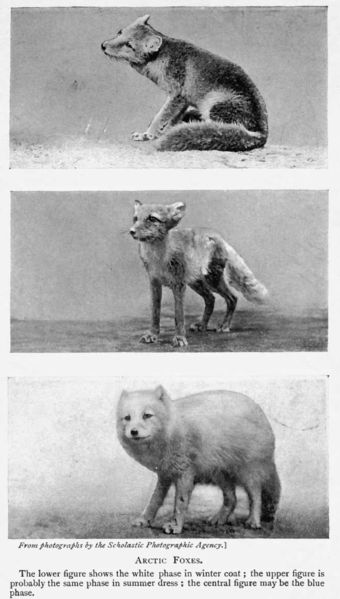Arctic Fox
 I’ve just been reading through MadelineDyer.com and found that we have little information on wild dogs, or closely related species, so I decided I’d write a post about the arctic fox.
I’ve just been reading through MadelineDyer.com and found that we have little information on wild dogs, or closely related species, so I decided I’d write a post about the arctic fox.
The Arctic fox is a relatively small species of fox that can be found native to the polar or arctic regions in the northern hemisphere, giving it the common names of ‘polar fox’, ‘white fox’ and ‘snow fox’.
There is confusion as to whether the Arctic Fox belongs to the genus ‘Vulpes’ (with most other foxes) or whether it should have it’s own genus of ‘Alopex’. More of than not the arctic fox is assigned to its own genus of Alopex, although genetic evidence suggests that it should be categorized in the Vulpes genus along with nearly all other foxes. Either way the second part of the scientific name or the individual species name is ‘Lagopus’; so, the Arctic fox can either be called ‘Vulpes Lagopus’ or ‘Alopex Lagopus’.
Interestingly, ‘alopex’ and ‘vulpes’ both mean ‘fox’, although the ‘Alopex’ is Greek and the ‘Vulpes’ is Latin.
This fox is extremely well adapted to cope with Arctic life; its thick fur act as insulation against the cold; thick layers of fat help to keep it warm; it has a ‘counter-current heat exchange’ circulation which helps it to maintain a core body temperature; its low surface area to volume ratio means that minimum heat is lost as less of the fox’s surface area is in constant contact with the Arctic cold. This is why the fox tends to be relatively small and the shape of a small barrel. Depending on the season, the Arctic fox changes colour; it is the pure white colour in the winter and a more brown colour in the summer time.
An Arctic fox is likely to eat any meat it can find which tends to be arctic hares, lemmings, eggs, seal pups, fish and carrion. The typical arctic fox family will consume dozens lemmings or fish a day, with the average fox eating 3-5 lemmings a day. The foxes’ amazing hearing allows it to locate the exact position of the prey under the snow. To catch the prey the fox will pounce onto the snow directly above the animal and ‘punch’ it’s way down on the unsuspecting animals.
Arctic foxes tend to live in family groups. The average litter size for arctic foxes is 5-8 cubs although up to 25 cubs can be born in one litter. Arctic fox cubs are likely to be born early summer after a gestation of around 53 days. Both parents will bring up the cubs in a large underground den, which may be used for many generations of foxes. When the young are born they are a dark red-bronw colour, they go white as they get older.
When the cubs are older, the males will generally stay with their family, whilst females will leave to start their own family. Some cubs will also help bring up the next years cubs along with their parents.
The length of an arctic fox is around 43 inches, with an extra 12 inches for the tail. Males tend to be slightly larger than the females. They are 10-12 inches high at the shoulder. There is quite a range to do with the weight of one of these foxes; males being 3.2-9.4kg and averaging 3.5kg, whilst females are considerably lighter at 1.4-3.2kg with the average being 2.9kg.
 August 7, 2010
·
August 7, 2010
·  Maddia (Admin) ·
Maddia (Admin) ·  Comments Closed
Comments Closed
 Tags: about the arctic fox, an arctic fox, arctic fox adaptations, arctic fox cubs, arctic foxes · Posted in: Foxes
Tags: about the arctic fox, an arctic fox, arctic fox adaptations, arctic fox cubs, arctic foxes · Posted in: Foxes


